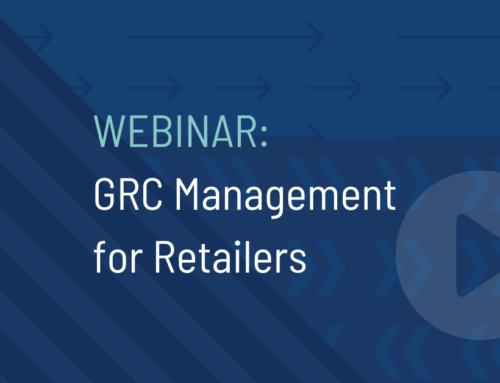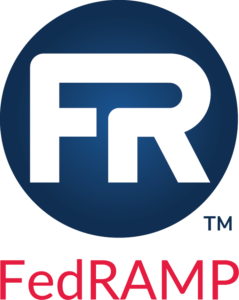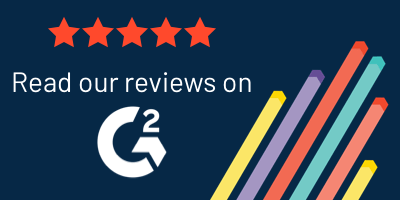How a GRC Dashboard Can Transform Your Data
As of 2024, 80% of organizations were either maintaining or increasing their GRC budget, with the majority of those funds dedicated to staffing and tools. The reason is the growing workload placed on companies to maintain their GRC environment — a challenge that GRC dashboards are made for.
The interface between the technology coordinating your GRC processes and the people completing them, GRC dashboards are the hub that orchestrates your operations. They provide an at-a-glance overview of your GRC workflows as well as the functionalities needed to deliver granular, actionable insights to the rest of your team. So what’s in your GRC dashboard, and how can you leverage it to meet your business needs?
GRC Dashboards: What Are They and What Do They Do?
As part of any GRC automation platform, a GRC dashboard is usually the first interface your team engages with as they look into GRC datasets or complete tasks their workflows, giving them a launching pad from which they can perform the rest of their operations.
These dashboard reports empower key stakeholders and team members with greater transparency to make more informed decisions. Automated GRC tools with dashboard capabilities improve accountability through:
- Monitoring task progress to ensure timely completion
- Storing mission-critical documents to improve knowledge management and efficiency
- Generating standardized reports with clear, actionable insights
- Displaying metrics, data elements and projects
Another convenient feature of a modern GRC dashboard is its ability to limit access rights or grant permissions for certain end users to view pertinent data. This not only allows your team to collaborate on interdepartmental processes but improves security by ensuring sensitive data and records are only accessible to authorized viewers.

What’s in a GRC Dashboard?
A typical GRC management dashboard would be designed to provide a comprehensive, real-time overview of your governance, risk, and compliance activities.
While a company’s exact GRC requirements will vary with their business processes, a dashboard that’s built to adapt and scale with their organization and team needs offers the best ROI. An effective GRC dashboard should be customizable, displaying exactly what your business needs to manage its risk and maintain its compliance, and nothing it doesn’t.
A typical GRC management dashboard would be designed to provide a comprehensive, real-time overview of your governance, risk, and compliance activities. A few common GRC custom dashboard features are:
- Reporting apps, such as heatmaps, charts and graphs to clearly visualize your data.
- Real-time views of task assignment and project completion, to keep everyone moving forward and on the same page.
- Displays of key performance indicators (KPIs), key risk indicators (KRIs) and other key metrics, such as the number of open tasks, overdue items, upcoming deadlines and overall compliance health or risk posture.
- Dashboard filtering to drill down into specific workflows according to the necessary criteria.
- Repositories giving you quick access to important reports, data and deliverables.
- Risk Heatmap that visualizes risks by severity and likelihood.
- Compliance Scorecard that provides the current compliance status against various regulations or standards.

The Benefits of a GRC Dashboard
Once you’ve configured your GRC dashboard to your needs, you can expect it to improve the clarity, consistency and efficiency of your GRC processes with:
- Deeper Insights. It starts off by giving you a bird’s-eye view of your governance and risk management processes, but a GRC dashboard let you zoom in from there to gain more granular insights. For example, leaders can use compliance reporting tools to evaluate specific departments, facilities or employees, or to address certain risks points according to their severity.
- Clearer Visualization. GRC dashboards contain multiple features that assist with visualizing compliance data. Heatmaps, charts and graphs let you clearly display your risk urgency and convey your data to non-technical stakeholders, providing greater clarity into your operations.
- Greater Standardization. GRC reports sometimes lack standardized formats, creating inconsistencies and miscommunications. Properly configured GRC dashboards provide reporting functionalities that deliver consistency across all your operations, boosting compliance and reducing the risk of errors as a result.
- Process Optimization. The insights you derive from your GRC dashboard show you which processes can be reconfigured to improve your efficiency. This fosters a culture of continuous improvement and ensures a better alignment with your business goals.
- Better Communication. From improved standardization to clearer data visuals, GRC dashboards allow you to communicate with your team more effectively. This creates better efficiency and faster project completion, since your team will be on the same page.
Whether you use it to monitor your project workflows or to present your data in a more standardized, accessible way, your GRC dashboard acts as a centralized hub from which you can orchestrate your business processes. The result is not only greater efficiency but better risk management and elevated compliance.
5 Best Practices for Using Your GRC Dashboard
To get the most from GRC software features, you’ll need to configure and use your dashboard to align with your business goals. Onspring offers dedicated support to get your dashboard up and running, but it helps to implement a few best practices to use this tool to its fullest potential.
1. Define Goals
What will you be using your GRC dashboard for? To track certification and completion rates? To oversee your team members’ task progress? To monitor multiple facilities’ compliance with industry standards? The first step in customizing to your application is to identify your goals for using it.
2. Identify Metrics
How does your team define success? The KPIs that GRC departments use to evaluate their progress vary by application, so your risk and compliance dashboard must display the metrics that best reveal the health of your processes. A few common GRC metrics are:
- Incident response time
- Cost of remediation
- Risk exposure
- Compliance adherence
- Stakeholder confidence
- Number of policy violations
- Training completion rates
While some of these metrics are harder to quantify than others, the general aim of your dashboard is to provide a snapshot of your GRC health. It should therefore give clear insights into your status of your workflows. That’s only possible if it’s tracking the right metrics. Configure your GRC dashboard so that your most mission-critical KPIs are visible and accessible at all times to make the most of your tool.

3. Gather Data
What data will fuel your risk analysis? The KPIs and metrics that you’ve identified depend upon the right data to reflect your business posture. It’s essential to gather your data and to consolidate it into a single repository.
Because GRC data can be scattered and highly unstructured, it’s important to collect it from as many valid sources as possible:
- Internal audit findings
- Vulnerability scans
- Risk assessment reports
- Industry standards and regulations
Once you’ve gathered the necessary data, your dashboard can serve as a single source of truth for your GRC operations. Leverage its reporting capabilities to convert your data into more standardized forms, improving its clarity, meaning and usability.
4. Implement and Deploy
With the necessary data inputs in place, you can configure your GRC dashboard to meet the exact needs of your department:
- Applying filters for greater granularity
- Creating real-time alerts and notifications
- Tailoring displays by role, department, or permission level
Before your GRC dashboard hits the wild, it will need to be tested for user-friendliness and functionality. Once it meets all requirements, set up training sessions so that all team members know how best to navigate your tool.

5. Monitor and Maintain
As with any tool, your GRC dashboard will require maintenance and monitoring. From an IT standpoint, ensuring that all patches and updates are applied regularly is essential for maintaining your cybersecurity posture.
From a GRC standpoint, your dashboard’s features may need to change as your business evolves. To keep it in top shape, revisit your GRC dashboard regularly and align it with the most recent data sources, regulatory changes and roles. This not only keeps your tool from getting outdated but fosters a culture of continuous improvement as well.
GRC Dashboards: Use Cases and Applications
To best understand how to leverage your GRC dashboard for compliance success, it helps to see how other organizations have used theirs. Here are a few success stories from our clients.
Cybersecurity: The University of Kansas Health System
Previously, the University of Kansas Health System was leverageing a GRC tool with limited automation, making it difficult for their team to keep up with their tasks.
Their previous out-of-the-box solution also lacked the customization needed to tailor their processes to certain HIPAA compliance rules, so they were looking for a more bespoke tool to maintain their cybersecurity posture. That’s when they turned to Onspring.
Offering both a highly customizable interface and task automation, Onspring proved to be the GRC dashboard solution that the University of Kansas Health System needed for multiple business processes. They initially turned to us for their cybersecurity processes but have since implemented:
- Contract management
- Third-party risk assessment
- Due diligence
- Risk questionnaires
- GRC document repository
- Risk register management
- Policy management and exceptions
- Internal and external auditing
In addition to the real time integration for cyber risk scoring, the University of Kansas Health System’s cybersecurity specialists appreciate the scalability of Onspring’s GRC platform, which yields longer term ROI.
Data Collection & Compliance: Avnet
Avnet supplies electronic components to major manufacturers across the globe, including the Department of Defense (DoD). When their lead security analyst took over, they found that their data collection processes relied on excessively manual workflows using Excel, email, or Teams. Their previous GRC solution also came with a steep learning curve and governance dashboards that lacked flexibility, so they turned to Onspring for help.
In addition to finding our tool to be user-friendly and easily deployable, the team at Avnet was especially pleased with our CMMC Management solution. By automatically mapping directly to NIST SP 800-171r2 and NIST SP 800-172 frameworks, our tool empowered Avnet to better monitor their status against CMMC 2.0 levels.
The result is a simple process by which the control owners can submit information within their area of responsibility, and greater involvement from other departments in their data collection and cybersecurity workflows. Now, 20 other Avnet departments use Onspring to coordinate their compliance efforts, creating a seamless experience across the entire organization.

Transform Your GRC Data With Onspring
Onspring is a leader in GRC technology. Our solutions boast a user-friendly GRC dashboard that not only places the who, when, and what, of your workflows right at your fingertips but comes with the advanced functionalities needed to deep-dive into your processes. Generate reports, track key metrics, and monitor your team’s progress all from our intuitive interface, and elevate your GRC processes.
To see how Onspring can benefit your overall GRC programs, request a demo today.





